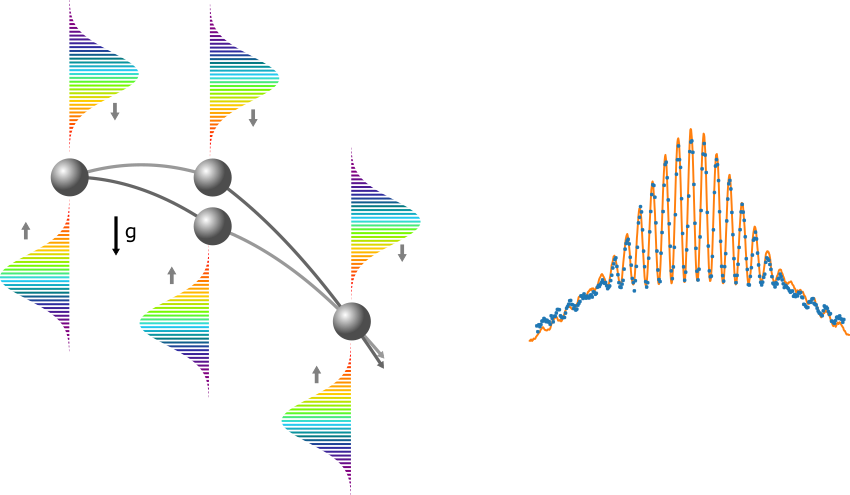The Atomic interferometry and fundamental tests team from the Kastler Brossel Laboratory published an article in the Physical Review Letters.
The authors :

- Cyrille SOLARO
- Clément DEBAVELAERE
- Pierre CLADÉ
- Saïda GUELLATI-KHELIFA
Light-pulse atom interferometry, where light pulses are used as atom beam splitters, has led to extremely sensitive and accurate quantum sensors that can be used to perform very stringent tests of fundamental physics such as: testing the equivalence principle, detecting gravitational waves, probing short-range forces or measuring fundamental constants (e.g. Newton’s gravitational constant or the fine-structure constant). Until recently, light-pulse atom interferometry had only exploited continuous-wave (cw) laser sources. We have recently demonstrated atom interferometers where the beam splitters are realized with pulsed lasers, or more specifically frequency-comb lasers. This technique, which we obtained in the visible spectrum on rubidium (Rb) atoms, paves the way for extending light-pulse interferometry to other wavelengths (e.g. deep-UV to X-UV) and therefore to new species, since one can benefit from the high peak intensity of the ultrashort pulses which makes frequency conversion in nonlinear media efficient.
The article led to a focus story in Physics that you can read here.

© C. Solaro, LKB, Sorbonne University

